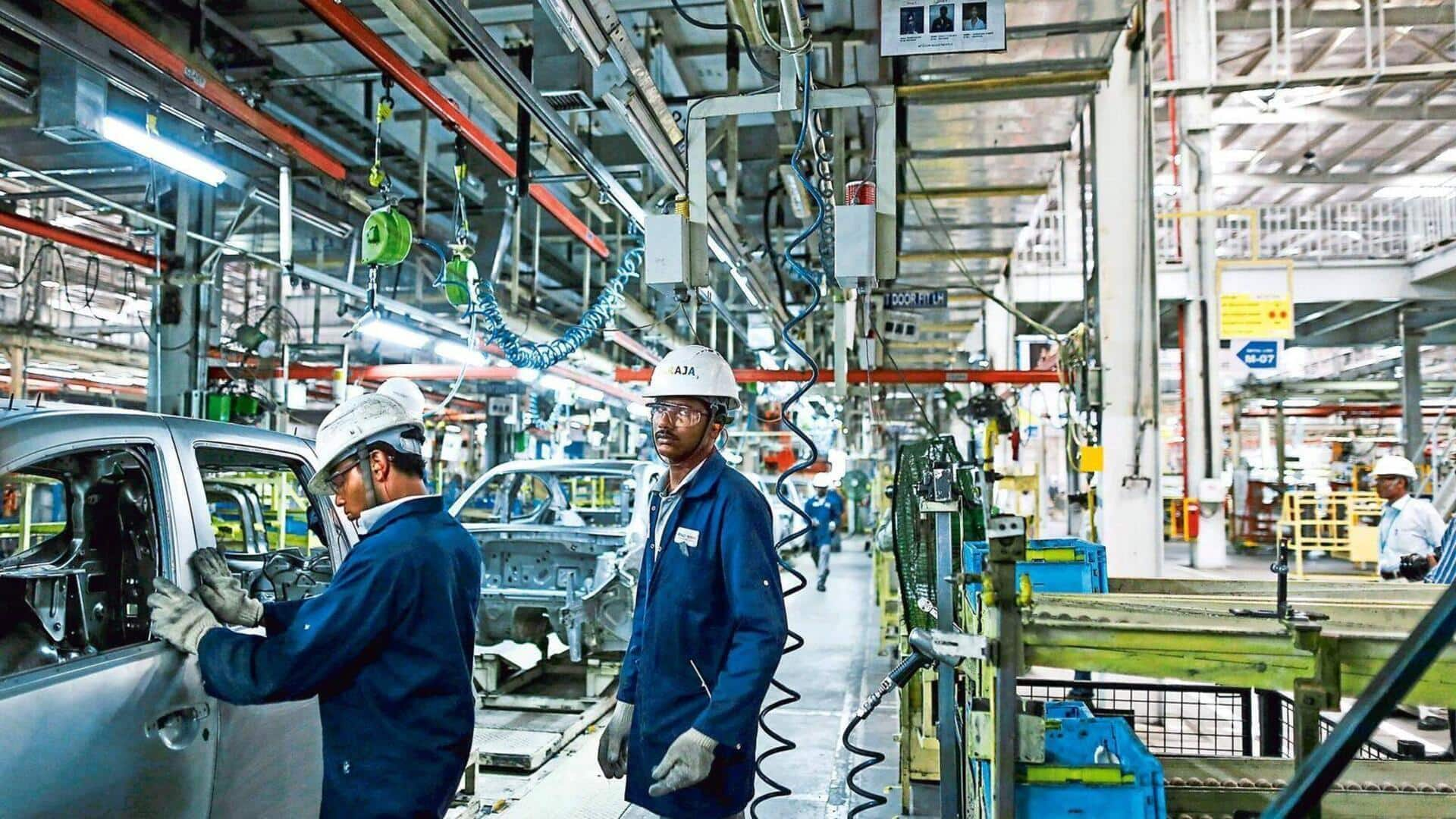
India's manufacturing growth hits 8-month low in September
What's the story
India's manufacturing sector is feeling the pinch, hitting an eight-month low in September. The HSBC final India Manufacturing Purchasing Managers's Index (PMI), put together by S&P Global, dropped to 56.5 last month from 57.5 in August - the lowest since January - and just below a preliminary estimate of 56.7.
Economic impact
Slowing demand and output impact manufacturing sector
Manufacturing in India is hitting a bit of a snag, and it's mainly because of a drop in demand and output. New orders, which are super important for gaging demand, are growing at their slowest pace since December. Plus, production levels have dipped to an eight-month low. This has made businesses a bit less optimistic about future output and job creation.
International trade
Export growth and business sentiment take a hit
International demand has taken a hit too, with export growth slowing down to a level we haven't seen in 18 months. Just 6% of the firms surveyed said they got more overseas orders. This has caused a bit of a dip in business sentiment. The future output sub-index, which gages how optimistic firms are about the coming year, dropped to its lowest point since April 2023.
Pricing trends
Inflation and price pressures in manufacturing sector
Despite a rise in input cost inflation from August, the inflation in prices charged was at a five-month low. This indicates that not all price hikes were being passed on to customers amid weaker demand. "Input prices rose at a faster rate in September while factory gate price inflation eased, intensifying the compression on manufacturers' margins," said Pranjul Bhandari, chief India economist at HSBC.
Monetary policy
RBI's stance and future expectations for manufacturing sector
The Reserve Bank of India (RBI) is likely to keep interest rates steady in October and only begin cutting them from December. Even with the current slowdown, net employment and purchase quantities have gone up. Business confidence is pretty much in line with its long-term average. There were moderate hikes in input costs and selling charges, which could further affect how the manufacturing sector performs.